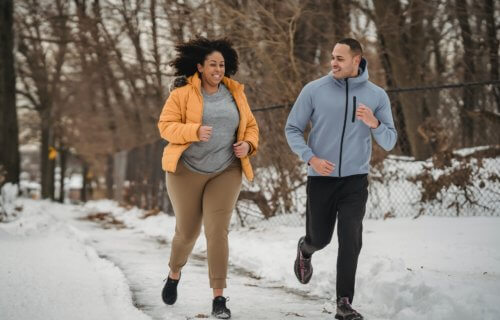TSUKUBA, Japan — Be careful the next time you set out for a run on a chilly morning. Researchers from the University of Tsukuba and Niigata University finds people often fail to perceive drops in their core body temperature while exercising as accurately as they would while at rest. These findings are worth keeping in mind for anyone about to engage in any exercise or sports during the fall and winter.
The human body maintains its temperature in a variety of ways. While it is true that our bodies keep us warm when we’re out in cold weather by shivering, sweating, and dilation or constriction of blood vessels, all that can only do so much. At a certain point, most people realize when they can’t take anymore chilly weather and need to head inside. Well, at least most people think they know. Study authors explain their discovery is somewhat concerning because it suggests many people may be staying out in the cold far longer than they should while engaging in physical activity.
“Both behavioral and autonomic thermoregulation depend on input from sensors located centrally and peripherally in the body,” notes study leader Professor Takeshi Nishiyasu in a university release.
What’s happens to the body when you exercise?
When we exercise, our muscles create heat that spreads to surrounding body areas via sweat. Additionally, skin temperature sensation drops during exertion. Researchers theorize this is due to a built-in pain-dulling mechanism that releases opioids into the brain – similar to the phenomenon known as “runner’s high.”
Now, normally when people work out in a temperate climate all of that has no effect on body temperature perception. When you’re sweating in the cold, however, that heat from your muscles leaves the body much more easily. For example, prior research conducted in Japan concluded shivering starts at a lower core temperature during exercise than it does while at rest.
“While this suggested to us that temperature inputs to the hypothalamus were affected, the question remained whether exercise affected skin or core temperature sensation in cold environments,” explains lead study author Tomomi Fujimoto.
The research team monitored a number of factors in a group of young men on two occasions: once while simply sitting around and again as they performed a series of low-intensity exercises while partially submerged in a tank of cold water. Researches measured their skin temperature, core body temperature, skin sensation, perception of cold, heart rate, blood pressure, and oxygen uptake.
The results show that the cold water tank did not have a major impact on skin temperature sensation; probably because the exercises were not high-intensity. Importantly, though, the experiment did influence core body temperature.
In summation, study authors say their work is worth noting for anyone and everyone who exercises in cold weather, lives in a colder climate, or participates in recreational water activities frequently.
The study appears in the journal Physiology & Behavior.
